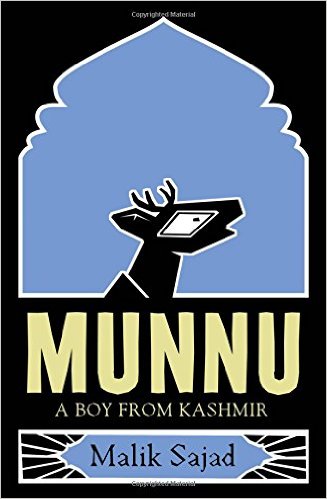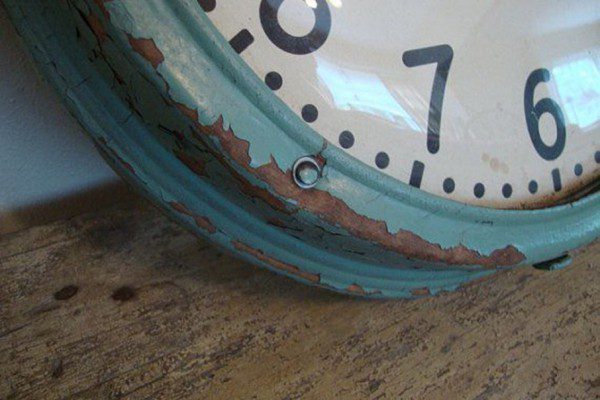Art was never devoid of its politics and it is through its politics, that the Kashmiris have empowered themselves against resistance and State repression for ages. The most brilliant example of art as a weapon recently, is of the graphic novel, Munnu, a boy from Kashmir, by Malik Sajad, says Ayesha Begum.
On everyone’s lips was news of my death, but only that beloved couplet broken, on his: If there is a paradise on earth, it is this, it is this, it is this.
~Agha Shahid Ali, The Last Saffron
None but the poet’s words could highlight the juxtaposition of the predicament of every Kashmiri, of the constant lurking of death, and at the same time, the beauty of Kashmir surviving miraculously, stitching itself in the seamless weavings of blood. Few weeks back, while sitting at Dakhinapan, I eaves dropped into the conversation of a few Bengali women. One of these women striked me in particular for her reference to Kashmir. On the one hand she was very vocal about how the Kashmiris are a ‘race’, full of aggression, constantly creating obstacles for the Nation( and so drew upon her wrath). On the other hand, she indulged into some nostalgia about her visit to Kashmir, and how its cherries and apples were a rarity( and heaved a relief that she visited Kashmir, luckily at a ‘less troubled’ time).
To view art and aesthetics as neutral, to fetishise art objects in drawing rooms, to be discussed for intellectual stimuli, is a fallacy and complacency, nourished by most petit bourgeouis individuals. However, it must be realised that art was never devoid of its politics and it is through its politics, that the Kashmiris have empowered themselves against resistance and State repression for ages. The most brilliant example of art as a weapon, was my recent reading of the graphic novel, Munnu, a boy from Kashmir, by Malik Sajad. The graphic novel not only portays the transition from Munnu, a naive art lover, to Sajad grappling with questions of identity as a Kashmiri through his art, but also the backdrop of the conflict of the 1990’s that shaped his views about an artist.This dichotomy of approach towards Kashmir made me realise how mainstream media has catered to the popular imagination through a binary. This binary, underscores the tendency to aestheticise and exoticise Kashmir, for its Pashmeena Shawls and its Paisleys but rejects the plight of its inhabitants.
The graphic novel is pertinent especially in our times, when every other day, the news of Kashmir comes through rising militancy against the Indian State, the sedition charges against individuals, for raising anti national slogans, in their outcry of ‘Azaadi’, in valorising the heroism of Jawans for protecting the honour and integrity of the State, at the cost of the civilians in the name of collateral damage and democracy. The recent death of Burhan Wani, sparked off immediate protests and a ritual of mourning in the Kashmir valley, followed by the imposition of more curfews, teargas and the recently innovative technique of using Pellet guns against civilians demanding redressal(blinding and crippling more than half the population according to a recent coverage by Guardian). The rise of militancy groups is a reality in Kashmir, and the graphic novel deftly picks up this theme, in the growing up years of the protagonist Munnu. The chaos and turmoil which Kashmir is plagued with is not a recent phenomena, but originating since the 1990’s. The loss of innocence is captured in the graphic novel with not only accounts of children at a young age picking up arms, joining resistant groups, but also in Munnu’s drawings of AK 47 for his classmates. The tendency to rebel has been part of a revolutionary zeal inculcated almost intrinsically in Kashmiris at a tender age. In other words, the constant repression by the State has unwittingly led to the temptation of becoming a rebel. At the same time, the insistence by Munnu’s father to study and the mother’s hysteric prayers for the safety of his children, showcases that part of the Kashmiri story that is never highlighted otherwise. It is this denial to see a large section of Kashmiris beyond the image of terrorists and militants, that feeds the imagination of popular media. For the common man on the street, like Munnu’s parents, the desire is to live peacefully and lead a ‘normal’ life(which however becomes an impossibility in the everyday discourse of politics)
The very question of militancy as a homogeneous unit is itself problematised. The question of resistance is in fact deeply heterogeneous, each group with its own politics and agenda, in their notions of freedom.
It must be noted that the different militant groups also have internal disputes, each blaming the other for selling out. What becomes interesting to note is that what started by a pro independence group, soon became convoluted and marked by schisms. It also highlights that irrespective of the attempt to bring the different Resistance groups under one organization called the ‘All Party Hurrayat Conference’, it soon failed to keep unity within it. In between the voices of those Kashmiris, who sought their link with Pakistan through the bond of Islam, and those who wanted to join the Indian union, the voices of those Kashmiris seeking sovereignty and self rule has become marginalised and stifled. It is also important to note that any political talks involving the issue of Kashmir has always been dealt with the approach of bilateral talks, without giving the Kashmiris the choice to exercise their own discretion.
The role of history with its authenticity and validity also falls under scrutiny. The Statist version of history is the one that is packaged through current political discourses legitimising the intervention of the Indian state and the repressive measures of the army in Kashmir. The graphic novel showcases that the official history is often constructed and hence creates the need for meta narratives and the debunking of its myth through mythification itself. Kashmir and its history receives different treatment at the hands of the Historian, the Resistance leader, the poet, the Kashmiri Pandit, the musician, the satirist and the ex Militant.To see the rebellion of the Kashmiris on a daily basis as simply obstructing State authority is to miss half the point. Kashmir had always been a coveted land for invaders, from the Mughals, the Afghans to the Sikhs.
The part of Kashmiri history, where the British had sold Kashmir to the Hindu Dogra King, Gulab Singh, for 7.5 million rupees under the treaty of Amritsar, is hardly ever reiterated in popular curriculum. The Partition of India too, left the question of Kashmiri memorandum completely ignored. With the arrest of Kashmiri leaders by the Dogra rulers, to massacres and popular uprisings, the Maharaja finally seeked refuge in India, leading to the historic armed intervention on 27th October, 1947 that persists till today.
Some of the recurring images with which Kashmir is depicted is the scene of random army crackdowns, arrests without warrant, fake encounters, curfews, and wailing family members over every death and missing relatives. Death is almost hyper visibly present in Kashmir. In the autobiographical account of Munnu, the protagonists’ journey through the macabre reality wrought with conflicts and more deaths, provides a point of vantage, to understand Kashmir beyond the black and white versions of history.
To understand the dynamics of the resistance of the Kashmiris, is also to understand the tradition of mourning and the commemoration of Martyrdom, and of the importance of the Shaheed(the martyr). The logic of martyrdom resists death through the idea of immortality and hence a victory against the hegemonic repression.
The teargas, the bombs seek to obliterate the Other, but the idea of martyrdom, showcases that the victims never forget. It also gives the oppressed a sense of communitarian solidarity, to constantly resist. The graphic representation of the mass mourning of Mustafa, the militant’s death, the brutal killing of the eight year old Sameer by army officials, the lamentation of Ejaz’s father for his death, all showcase that their deaths are not just a point of statistical reference, but an indelible mark etched in the memories of the Kashmiris. Sajad’s depiction of the Kashmiris as Hanguls, is to showcase how like the deer, the Kashmiris too have become an endangered species, constantly struggling for existence.
To return back to the question of Art, we see how the artist not only captures the grotesque reality of the occupation of Kashmir, but as the very medium to resist the diabolical nature of State authority. Sajad, constantly turns self reflexive, through his narration of stories via the medium of art and also furthers the spectrum of art beyond the polemics of pseudo intellectual rhetoric. As outsiders, we can try to be objective and appreciate art, but for the Kashmiris, the Chinar trees, the waters of Jhelum, the wooden carvings and embroideries become a symbol that unites the people beyond suffering. It is this aspect, that never comes to the forefront while discussing resistance strategies deployed by the Kashmiris.Kashmiris have vested their art with a strange power and hence able to survive the conflict. The spirit of revolution echoes not only in their outcry of freedom, in the currency of blood, but through songs, graphic art, music, photography and journalism.
A recent documentary film shot in 2016, entitled, In the Shade of the fallen Chinar, directed by Fazil Nc and Shawn Sebastian, showcases a very different picture of Kashmiri youths to resist the army occupation. In a place called ‘Naseem Bagh’, in Kashmir University, the site of a fallen Chinar has become a kind of space for artists from different backgrounds, to rebel through art, an object of nature turned into an installation art, where the voices of different artist get a vent, through their respective genres. Curfews still prevail. State atrocities against its own civilians still persist, yet the hope for freedom still lingers on. Ali Saffudin, a Kashmiri musician, who uses his music to destabilize and counter mainstream narrative, has aptly recognised conflict as a perfect place for art to thrive. In his words, “A guy like me in the 90’s would have picked up a gun, a guy born 20 years later, picking up a guitar has the same ideology..to resist.” (In the shade of the Fallen Chinar, Drokpa Films)














